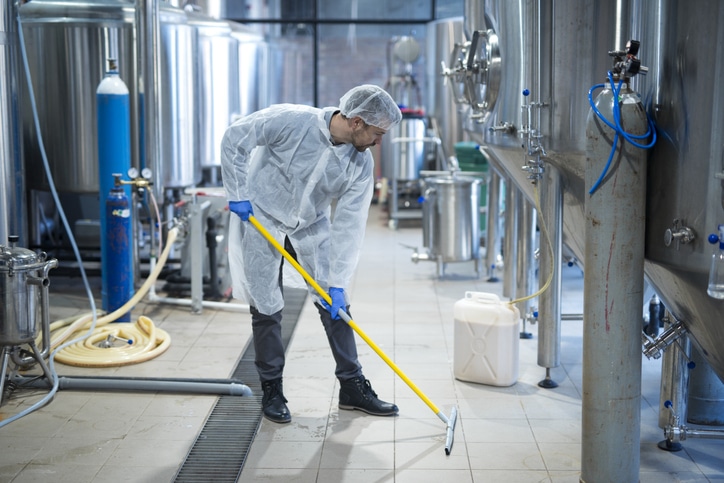Industrial hygiene is a critical aspect of any business that operates in a commercial or industrial setting. There are plenty of ways to monitor or improve your industrial hygiene, whether it’s establishing and enforcing safety practices, or controlling environmental factors.Promoting good housekeeping habits within the workplace is a great place to start when implementing industrial hygiene; following that up with a consistent review is equally important. Here, we will talk about five great tips on keeping your industrial hygiene at an all time high and maintaining a safe and healthy workplace.

1. Implement an effective ventilation system
One of the most important ways to improve your industrial hygiene is to implement an effective ventilation system. Ventilation systems help to remove contaminants from the air and improve air quality. A well-designed ventilation system can also help to reduce noise levels and improve worker comfort.
A good ventilation system will also help you control environmental factors; it will help to keep your work environment clean and free of contaminants, including dust, fumes, vapours, and particles, as well as control the temperature and humidity levels as well to minimise the risk of slips, trips, or falls.
2. Use personal protective equipment
Personal protective equipment, or PPE, is another important way to improve your industrial hygiene. PPE includes items such as gloves, respirators, and earplugs that can protect workers from exposure to hazardous materials. It is important to select the right type of PPE for the job and to train workers on how to properly use and care for their PPE.
You should also promote good personal hygiene habits with staff. Teach employees how to properly wash their hands and avoid spreading germs, bacteria, and other contaminants around the workplace. You can also monitor industrial hygiene conditions, and periodically review your hygiene program to ensure that it is effective in protecting workers’ health and safety.
3. Use administrative controls
Administrative controls are work practices that are used to minimise employee exposure to hazards. Common administrative controls include workstation design, job rotation, and work breaks. Administrative controls are typically less effective than engineering controls in protecting workers from exposure to hazards.
You’ll also want to manage physical hazards – by eliminating or controlling any physical hazards in your workspace, you’ll actively reduce exposure to harmful noise levels, hazardous materials, and dangerous machinery.
4. Conduct regular safety audits
Safety audits are a key part of any industrial hygiene program. Safety audits help to identify potential hazards in the workplace and ensure that all safety procedures are being followed correctly, and should be conducted regularly by trained personnel.
It’s also important to establish safe work practices and enforce them. Make sure everyone in your workplace knows and follows the safety procedures for the tasks they are assigned. This includes wearing the proper personal protective equipment (PPE), using safe handling practices, and reporting any unsafe conditions.
5. Have an industrial hygiene assessment
If you are looking for assistance with creating or implementing an industrial hygiene plan, it’s a good idea to speak with a professional. They can help direct you with where to start, and outline what you need to do to improve your current procedures.
By hiring a professional consultant, you can start with a fresh slate and develop a blueprint to use and build upon when improving your industrial hygiene. That way, your commercial work environment will become as safe as possible, now and into the future.
Final thoughts:
We hope this article has helped you understand the basics when it comes to industrial hygiene, and how to improve it. While this blog only outlined five ways to improve your work environment, there are plenty of other reasons to implement a hygiene program at your place of work.
Alberta Safety & Environmental Services (ASE Services) is one of the most reputable providers of Hazardous materials assessment and hygiene inspection services—including asbestos, lead, mould, mercury, and silica detection, as well as industrial hygiene testing for grow ops and other facilities.
With a background in Alberta’s Occupational Health & Safety Commission and professional project management skills, our qualified staff can provide reliable handling of air quality and industrial hygiene from initial industrial inspection all the way to remediation programs. Whether just for a permit, or in-depth air quality control, we can help. Feel free to reach out and secure air quality and hygiene requirements for your building.
